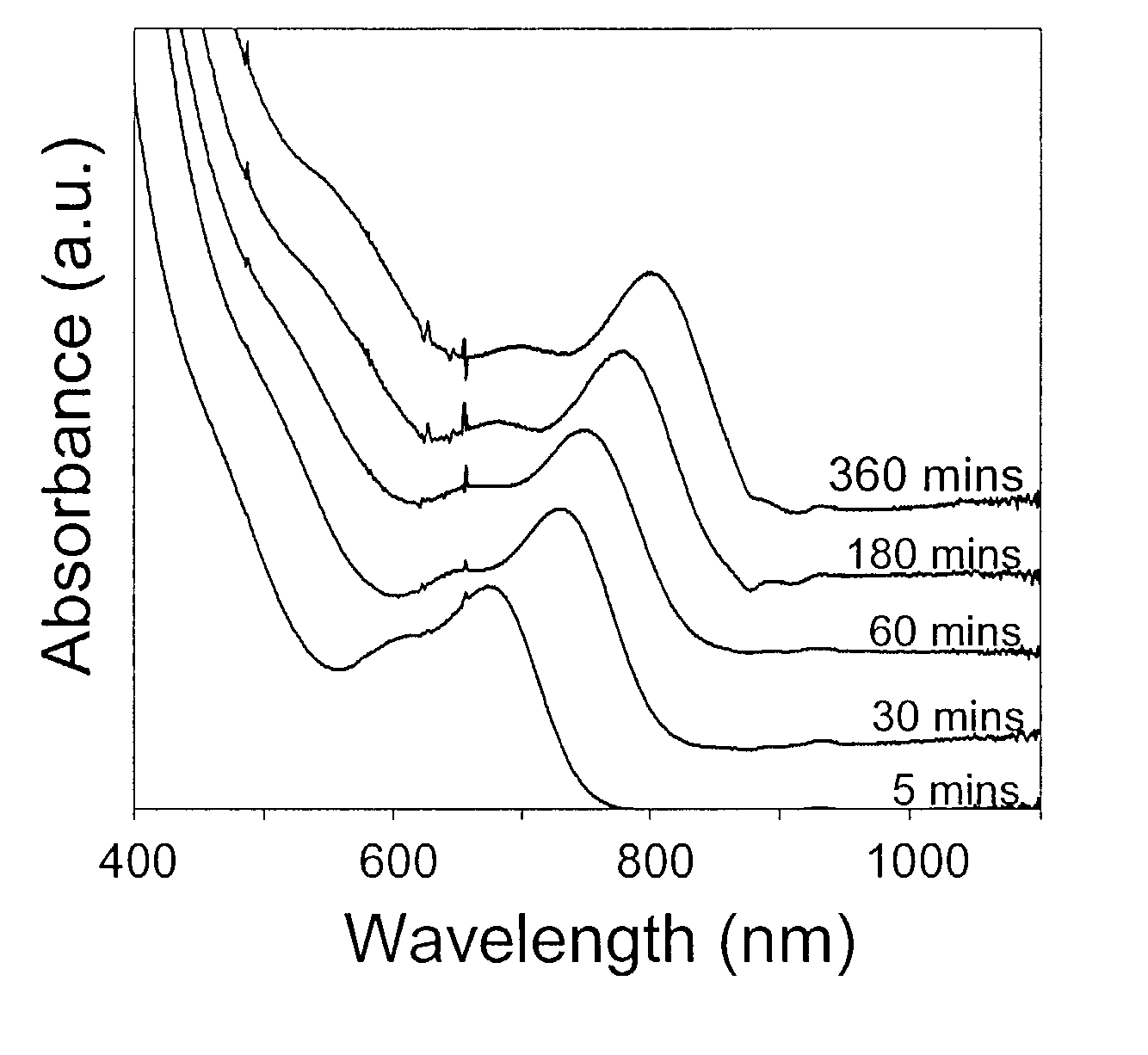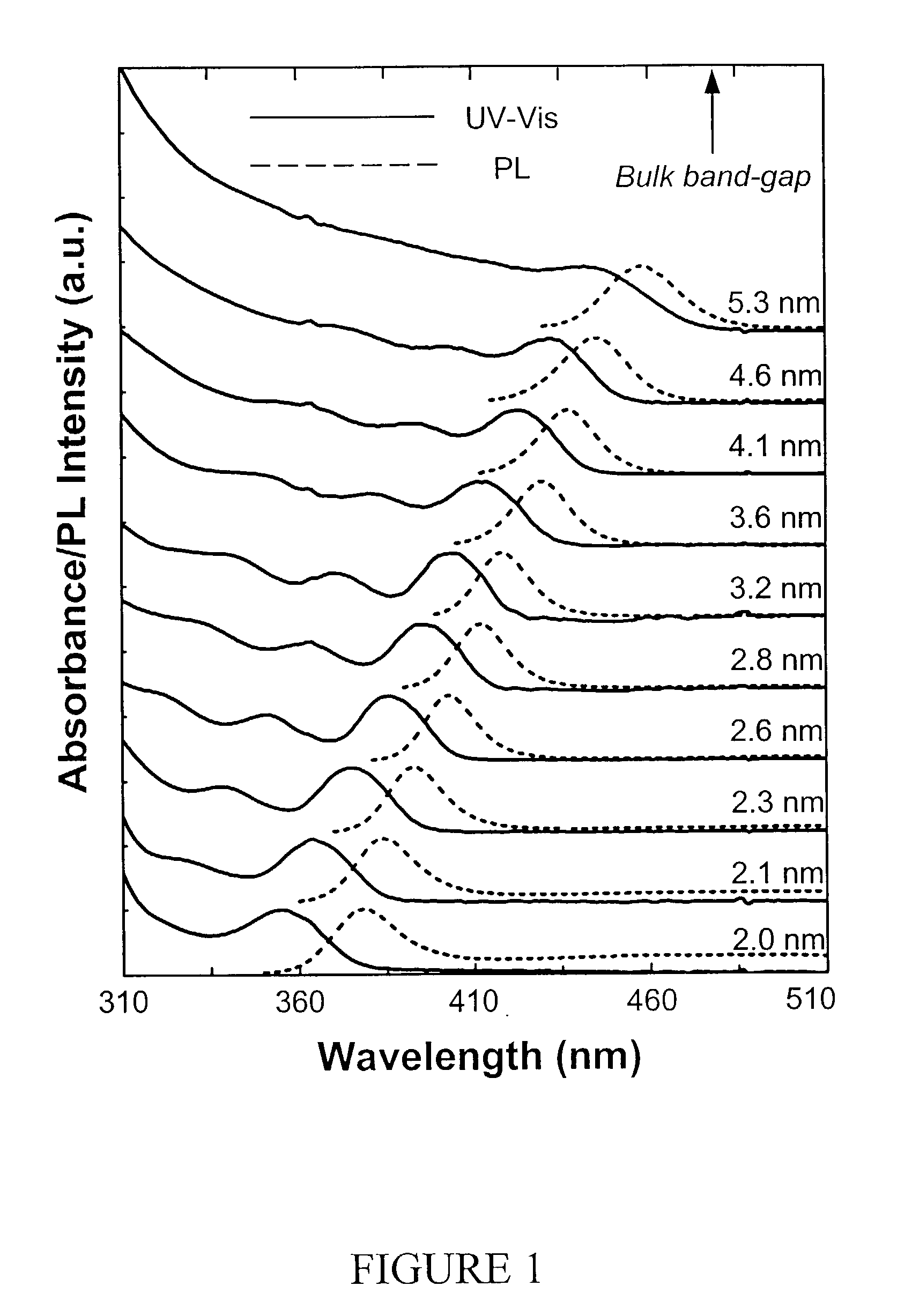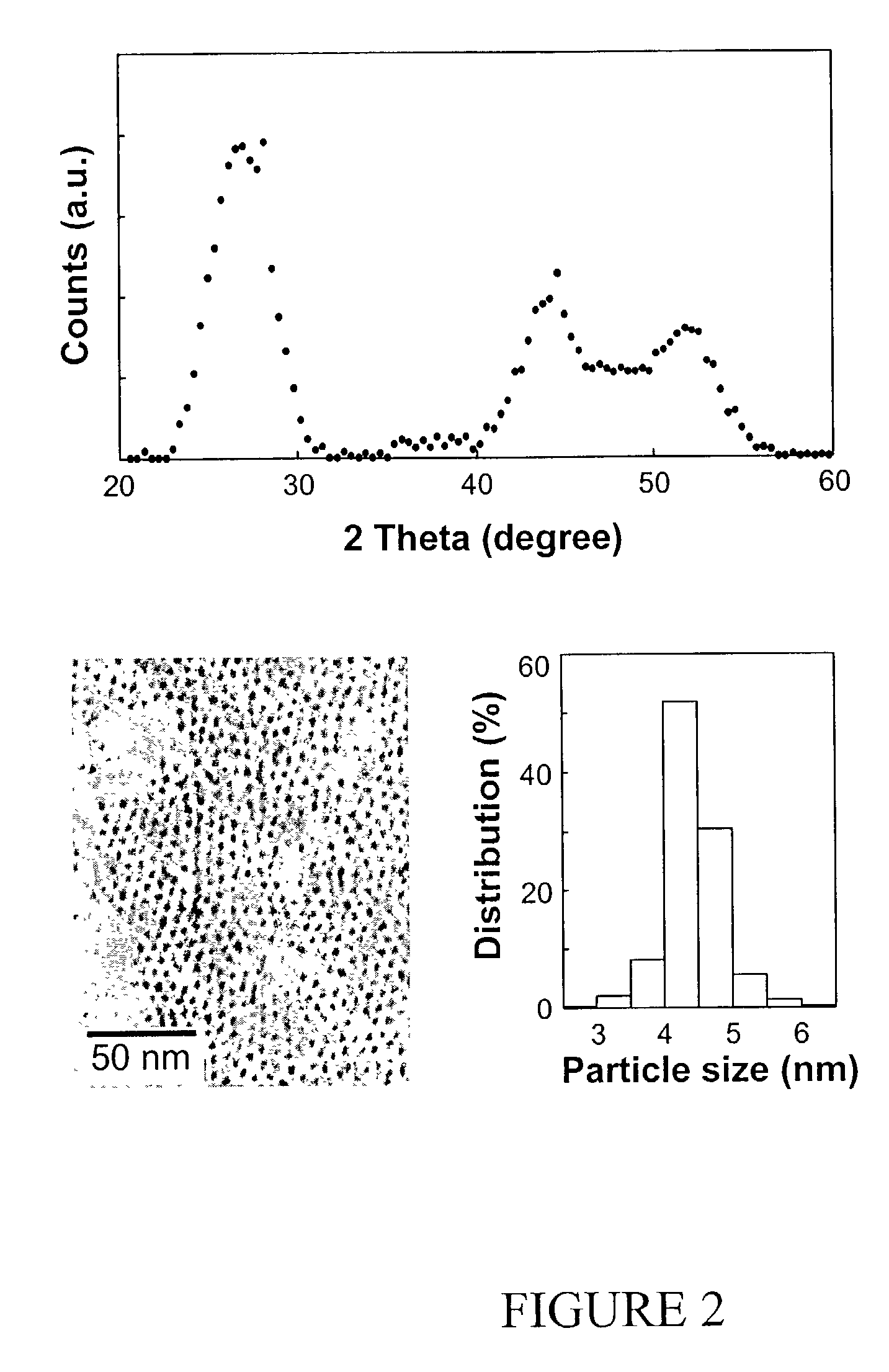High quality colloidal nanocrystals and methods of preparing the same in non-coordinating solvents
- Summary
- Abstract
- Description
- Claims
- Application Information
AI Technical Summary
Benefits of technology
Problems solved by technology
Method used
Image
Examples
example 1
Preparation of Monodisperse CdS Nanocrystals in a Non-Coordinating Solvent
[0077] In a typical synthesis, a mixture of 0.10 mmol (0.0128 g) of CdO, 1.5 mmol (0.4237 g) of oleic acid, and 3.5635 g of technical grade octadecene (ODE, Aldrich Chemical Co., Milwaukee, Wis.), was prepared and heated. This mixture became optically clear at around 200° C., and was further heated up to about 300° C. and maintained at this temperature for the injection of the sulfur solution. A sulfur solution was prepared by dissolving 0.05 mmol (0.0016 g) of elemental sulfur in 2 grams of technical grade ODE. The preparation of the sulfur solution often required heating up the sulfur / Tech ODE mixture to about 100° C., allowing the sulfur powder to completely dissolve, and then cooling the solution to room temperature. The resulting, optically clear solution was stable at room temperature and ready for the injection. This sulfur solution was then swiftly injected into the hot, cadmium-containing solution w...
example 2
Preparation of Monodisperse CdSe Nanocrystals in a Non-Coordinating Solvent
[0080] The synthesis of CdSe nanocrystals was carried in a similar fashion as described in Example 1 using CdO as the cation precursor, in which the selenium source for injections was an ODE solution of selenium-tributylphosphine (1:1.1 ratio). The Se—TBP or other selenium organophosphine compounds was prepared simply by dissolving Se in a desired amount of liquid organophosphine. The injection solution was further prepared by diluting the Se-phosphine solution with an adequate amount of ODE.
[0081] For the synthesis of CdSe nanocrystals with high PL QY, long chain amines, such as hexadecylamine (HDA) and octadecylamine (ODA), were used as the co-ligands.
example 3
Preparation of Monodisperse CdTe Nanocrystals in a Non-Coordinating Solvent
[0082] The synthesis of CdTe nanocrystals was carried in a similar fashion as described in Example 1 using CdO as the cation precursor, in which the tellurium source for injections was an ODE solution of tellurium-tributylphosphine. The Te—TBP or other tellurium organophosphine compounds was prepared simply by dissolving Te in a desired amount of liquid organophosphine. The injection solution was further prepared by diluting the Te-phosphine solution with an adequate amount of ODE. The as-prepared CdTe nanocrystals possess very high PL QY, typically around 50%, without any further treatment. To maintain the bright emission of the CdTe nanocrystals, the as-prepared nanocrystals should be stored under air-free conditions, which is different from the bright CdSe nanocrystals.
PUM
 Login to View More
Login to View More Abstract
Description
Claims
Application Information
 Login to View More
Login to View More - R&D
- Intellectual Property
- Life Sciences
- Materials
- Tech Scout
- Unparalleled Data Quality
- Higher Quality Content
- 60% Fewer Hallucinations
Browse by: Latest US Patents, China's latest patents, Technical Efficacy Thesaurus, Application Domain, Technology Topic, Popular Technical Reports.
© 2025 PatSnap. All rights reserved.Legal|Privacy policy|Modern Slavery Act Transparency Statement|Sitemap|About US| Contact US: help@patsnap.com



